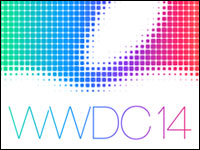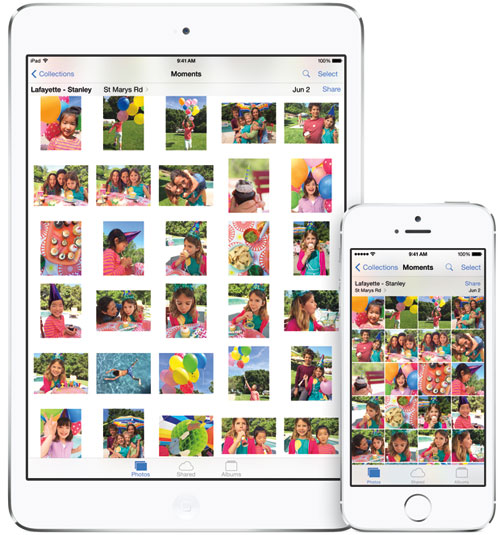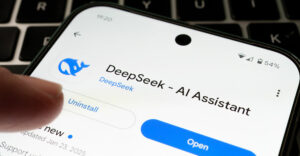
Apple managed to pull off a mean feat on Monday at itsWorldWide Developers Conference. Without announcing a singlehardware device, it teased consumers with dozens of updatedfeatures in iOS 8 and the next version of Mac OS X — dubbed “Yosemite” — then doubled-down with app developers by offering tons ofnew APIs, along with elements of deep integration between apps and devices. The company capped it all off with the announcement of Swift, a brand new Xcode programming language for developers.
Everybody got a taste of something tantalizing.

That was important. Even though Apple’s WWDC has turned into a limitedvenue affair — only about 6,000 developers can buy tickets — it’s an important opportunity to showcase new Apple products and services. Apple lets its fans view the keynote stream live from its website, as well as replay it later.Consequently, Apple not only has to address the concerns of hardcore developerswho are building apps for iPhones and Macs, but also satisfy the consumer-oriented interests of loyal fans and industry watchers.
So, how did Apple manage to walk these lines? As I saw it, astoundinglywell. To deliver two hours worth of fast-paced presentation, Applebroke up the keynote into three sections: one on Mac OS X Yosemite; one oniOS 8; and one for devs.
However, this key takeaway is worth keeping in mind: Apple is not trying to converge iOS with Mac OS X, and it is nottrying to converge a touch interface with a traditionalkeyboard/Mac/PC interface.
Unlike the Microsoft Surface Pro, a MacBookis still a laptop and an iPad is still a tablet — and there is nohint that Apple will try to jam them together to create a new singleproduct. Instead, Apple is carefully integrating and connecting thedifferent environments and devices so that they feel seamless whileretaining their distinct capabilities. Read on for specific examples.
Inside Mac OS X Yosemite
The install base for Max OS X is more than 80 million, and accordingto Apple CEO Tim Cook — who delivered most of the braggingnews — the year-over-year Mac vs. PC industry growth rate pegs the PCin a 5 percent decline while the Mac grew 12 percent. Plus, just overhalf the install base now is running Mac OS X Mavericks, the latestrelease. Cook took the time to call out the adoption rate of Windows8, which shipped a year before Mavericks, at just 14 percent.
Meanwhile, the next big version of Mac OS X gets the California-themedmoniker of “Yosemite.” Cool. Moving on.
As expected, the overall look and feel of Yosemite — which will beavailable for consumers, free, this fall — is much like iOS 7. TheFinder windows take on a translucent feel, which gives the screens asense of color and the vague shape of the desktop underneath thelayers.
Notification Center is more like iOS 7, and the Today view canbe extended with widgets you can download from the App Store. Apple’sintegrated search, Spotlight, is now much more powerful, searchingacross the Mac and Internet, offering up access to individualdocuments, and launching apps based on one or two typed letters.
Apple is beefing up its iCloud service, adding iCloud Drive, whichgives you iCloud storage that’s bigger and more usable for a widevariety of documents and syncing.
At the same time, Apple is helping out with a common problem — themailing of large attachments, which many email servers reject. Apple’snew Mail will let you seamlessly send the “attachment” as alinkable file on iCloud to the recipient. Why is this cool? Becauseusers are still notorious for just trying to send images and video andlarge file sizes without uploading them to services like DropBox toaccomplish basically the same thing as Apple’s new service, which iscalled “Mail Drop.”
Apple also is introducing markup into Mail, which will let you drawover the top of attachments to highlight something you want to drawattention to — for collaboration or just to make fun of one of yourfriends. On a .pdf document, though, it also means you can use the trackpad tosign your name. Nice. One less third-party app to find or learn.
Safari gets a leaner and cleaner look at the toolbar level, but alsolets you access favorites by typing into the smart search field. Thecoolest potential new feature for power users is a new tab view thatwill show stacks of tabs for all the sites you’ve got loaded up.For mobile warriors, Safari is faster and more energy-efficient, and it caneke out nearly two hours of additional battery life when streaming 1080pvideo from Netflix.
Continuity in Action
At WWDC, Apple’s senior vice president of software engineering, CraigFederighi, delivered most of the content, including the introductionof Continuity, a concept that lets various Apple devices and serviceswork seamless together.
With iOS 8 and Yosemite, the quick and easy file transfer feature, AirDrop, will let you move files from your iOS device to your Mac, and vice versa. Plus, if you’re not on your home WiFi network, your iPhone and Mac can connect to each other with theirown little network.
A new feature for this is Handoff, which lets yourdevices become aware of what they are doing, which in turn lets youwork on a document on your Mac, then pickup your iPad, and with anifty lower-left screen notification, swipe up into using whatever itwas you were working on. Like a document — or even a half-finishedMail message.
Handoff goes back the other way too, of course. Forinstance, you can start a mail message on your little iPhone, getfrustrated by the little keyboard, and just finish it on your Mac.Just saying. I can totally see using Handoff this way.
With Hotspot, your Mac will be able to connect to your iPhone (andiCloud) and let you do some really cool messaging and phone callingtypes of communication.
For instance, your Android-using friends willbe able to message you to your iPhone, which you can receive on yourMac and chat back and forth on your Mac — while your iPhone is inyour bag or in some other room on a charger. You also can answer acall that’s coming into your iPhone on your Mac, use your Mac as aspeakerphone, and dial new calls, too.
This integration goes deeper. If you’re looking up a business onlinein Safari on your Mac, Safari will recognize a phone number on the Webpage and give you the ability to call that number through your Mac — routed through your iPhone, of course. The demo made all of thislook not only handy, but super easy.
Inside iOS 8
At the start of the iOS 8 intro, Cook took the opportunity to bragabout the success of iOS, noting that Apple sold more than 100 millioniPod touch units, 200 million iPads and 500 million iPhones. Betterstill, iOS devices brought 130 million new customers to Apple lastyear.
Cook joked that many of these new customers were switcherswho bought an Android device “by mistake” and were coming over toApple for a better experience and “a better life.” Customersatisfaction with iOS 7 was at 97 percent, which was insanely great, ofcourse, but the real point was this: 89 percent of iOS installs wererunning iOS 7. How did Android’s KitKat compare? Just 9 percent ofdevices were running KitKat. Ouch.
That meant the vast majority ofAndroid users were nowhere near getting the latest and greatestfeatures of Android’s operating system. The underlying message wasthat, for app developers, the iOS target audience was not only verylarge, it was astoundingly up-to-date and consistent. An iOS appdeveloper who wanted to use a new feature of iCloud, for instance, couldcount on iOS customers being able to use it.
As for new iOS 8 features for consumers, come fall you’ll be able touse interactive notifications, which will let you do things like replyto text messages from the notification without needing to leave theapp you were using. Mail will get a few ease-of-use updates whileSpotlight on iOS becomes more powerful — like the Mac version.
For typing, the software keyboard in iOS will get a welcome refresh,offering a new feature called “QuickType,” which uses a whole mess ofnew predictive typing to offer you context-specific full-word options.
How does this work? Say you’re typing a message about a meeting toyour boss. Above the keyboard a few word options will show up asbuttons you can tap to rapidly insert into your message. The word choices reflect your past activity, because a message to your boss might tend to use different language than you would use with your peers or friends. The boss options? The meeting could be canceled, rescheduled or moved. The peer message options might offerwords like “snoozer” to describe the meeting and “epic” or “awesome” to describe its cancellation.
Depending on the brains that run QuickType, the feature could turnout to be epic — or a snoozer.
Messages, which is far and away the most used app on iOS, will see amajor update this fall in iOS 8. Photo and video attachments tomessage conversations will get a new at-a-glance view that will place themall in one handy grid. This is cool when families and groups are allchatting away at the same time via text messaging.
Of course, being inthe middle of such a conversation can make your iPhone vibrate to noend, so Apple created a feature that will let you exit a conversation– or just enter do-not-disturb for that particular conversation,which will let you continue to receive other text messages. Theconversations? You can name them now, too, making it much easier tokeep track of your messaging activity.
Also built-in is the ability to “Tap to Talk,” letting you voicerecord an audio snippet to send as a message. You can send avideo message as well. It looks to be super easy and super seamless.Furthermore, as you’re messaging, you can choose to show your personallocation for an hour, until the end of the day, or indefinitely –which is cool because it lets you fine-tune the details you share withothers.
HealthKit APIs
One of the potentially big new features is HealthKit, which is a setof APIs that will let developers build applications that can handleand manage health-related data, and let users make sense of allthat data through a single iOS app called “Health.”
The Health app iniOS 8 will let various medical devices and measurements pour into aunified portal — the Health app — giving iOS users new insight intotheir health. Apple didn’t mention it, of course, but if and when thecompany releases a health-oriented iWatch, data from the iWatch can becollected into the Health app.
Because the developer-focused HealthKit and Health app are so extensible, they can be used to communicate with caregivers — like the Mayo Clinic — which can tapinto them to gain access to personalized health information and thenreact accordingly during healthcare situations.
In addition to encouraging fitness, the Health app will be able to monitor almost anymedical condition that can be measured with a device that cancommunicate with iOS. If this is easy and secure for consumers to use, it could create a way that Apple can play nice with other innovators in the market while retaining a easy-to-use hub on iOS.
Apple also introduced a bunch of smaller improvements, including aFamily Share plan that lets up to six family members who use the samecredit card number for iTunes or the App Store share theirpurchases across their devices. When kids try to buy something, their devices will send a permission note to their parents asking for approval.
iPhoto brings easy-to-use new editing features, as well as massivelyincreased iCloud synchronization and storage options. You’ll be ableto edit photos on your iPhone easily, sync and store them in iCloud,and access them via a new method on Mac OS X — coming this fall. Thefirst 5 GB are free, 20 GB will cost US$1 a month, and 200 GB willcost $4 per month.
New Dev Goodness
In addition all the new features coming to iOS and Yosemite, Apple’sTestFlight app is now baked right into iOS 8, which will make betatesting easier for developers. Plus, developers will be able towrite applications, widgets, and extensions that will be able tocommunicate securely with other apps.
For example, a developer whocreated a killer photo-editing feature could enable the feature to beused from within other apps. One of the examples from Apple includedusing a Bing translation extension for Safari to translate Japanese toEnglish with the Web page itself. That also means — mostly for powerusers — that you can install third-party keyboards that might havebetter functionality than Apple’s default keyboard.
HomeKit, it turns out, isn’t as large as the home automationrumors suggested last week. However, it has the potential to growquickly. Apple’s play here is to create a seamless one-spot app thatwill let users control a variety of home automation devices andsolutions.
It’s a system that lets others work with Apple, and for theconsumer, it could result in the ability to tell Siri that it’s”bedtime,” which could tell your home to turn down the thermostat,turn off the inside lights, turn on the outside lights, shut thegarage door, and lock all the doors. Or create your own environmentalparameters, like “Disco Time” or “Game of Thrones.”
Again, like theHealthKit, Apple is seeking to control the home automation experience– or finally let regular consumers control a bunch of disparate homeautomation devices through their Apple devices.
If third-party players get on board — Apple claimed to be workingwith some leaders in the home automation world — HomeKit couldprovide a jolt to the industry.
Tired yet? There’s still a heckuva lot more to cover. Apple introducedCloudKit, which opens up Apple’s iCloud servers to let developersaccess and tap into them more easily than before, at presumably nocost (or some reasonable cost for high-performing, super popularapps).
A new graphic-rendering technology called “Metal” will let developersvastly increase their ability to build graphically intensiveenvironments for iOS. Plus, Apple made some nice updates to SpriteKitand SceneKit to help developers build rich casual games easily.
Enter Swift
The most important new announcement for developers, though, has to bethe new programming environment Apple named “Swift.” It’s supposed to besuper fast, which Apple characterized as Objective-C without the “C.”
The whole new coding environment will let developers get moreaccomplished through fewer lines of code, plus view the output side-by-side with the code as they program their applications. Swiftworks with Metal to create graphically intense games. It also can be used tocreate simple games or social media apps.
All-in-all, the 2014 WWDC keynote introduced the next face of iOS 8and Mac OS X Yosemite while offering up some big gains for developers.As for new hardware, though, keep waiting.






















































Excellent summary. I just watched the whole keynote address then read your article. Great job, Chris. Keep up the good work!